Total Solar Eclipse - 21 August 2017
Posted: 4 September 2017
This is my report on the Total Solar Eclipse of 21 August 2017. You can see photos from places we visited before and after the eclipse: Space Center Houston, US Space and Rocket Center, Von Braun Astronomical Society planetarium & observatory, Dyer Observatory, and much more on our "Total Solar Eclipse Trip" report.
A couple of years prior to the eclipse, Laurraine and I signed up for the Sky & Telescope Total Solar Eclipse tour. The tour was managed by Insight Cruises, a tour company that the magazine has used for other events. So we had high hopes for a successful "land cruise". And we would let others deal with the logistics and any weather issues. As it turned out, this was an excellent decision!
We left home on our driving trip across the country two weeks before the eclipse and made several stops on our way to Nashville, Tennessee, which was the base location for the "cruise". Our SUV was tightly packed with clothes, mobile devices, cameras, and my eclipse photography equipment:
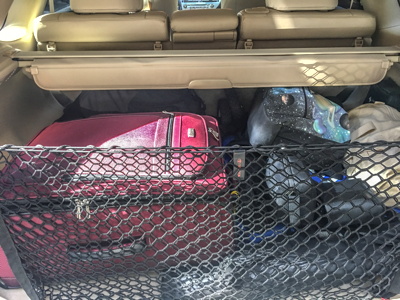
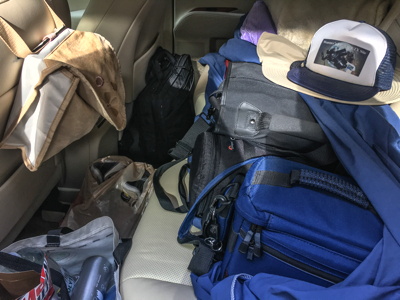
We were provided with a Program Guide that listed all the excursions that were planned for our "cruise" and our ID badges and caps:
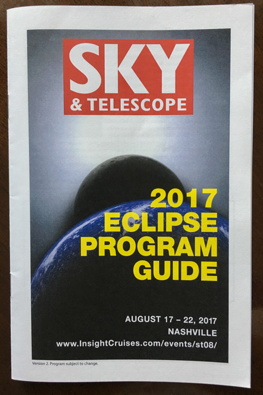
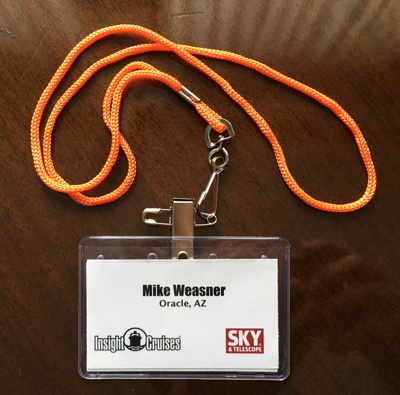
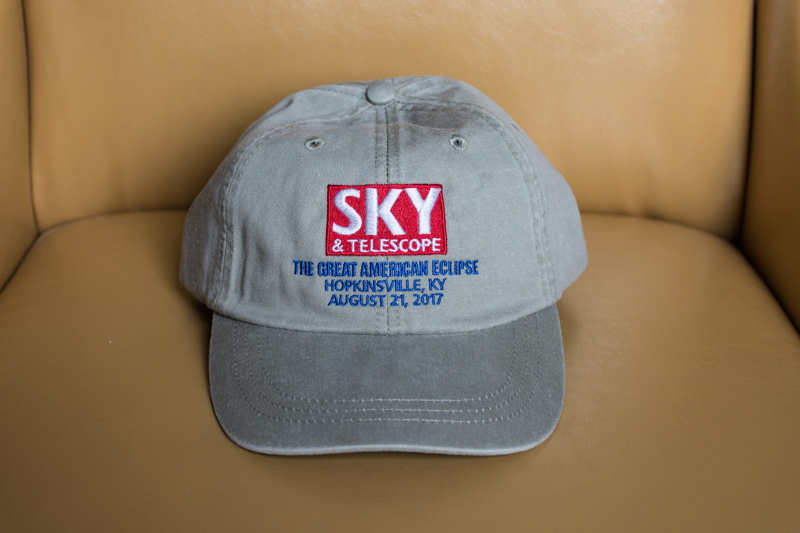
For eclipse viewing we would be at the Hopkinsville Community College in Hopkinsville, Kentucky. Totality would last 2m 40s at our location.

The day before the eclipse, Kelly Beatty, Senior Editor at Sky & Telescope, gave a presentation to the tour group:
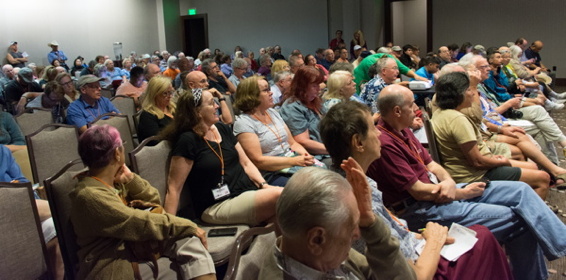
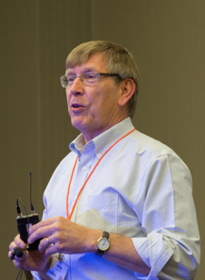
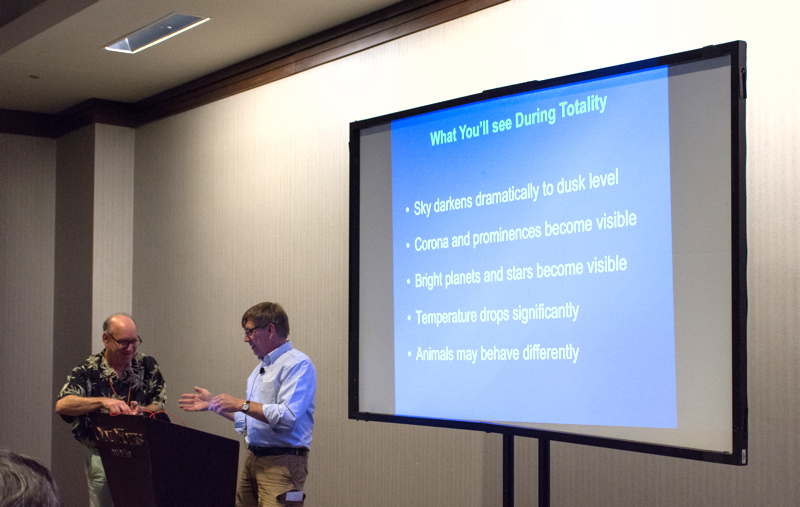
When one of the speakers was delayed, I gave a short talk about imaging the total solar eclipse using a smartphone. I discussed my iPhone setup:
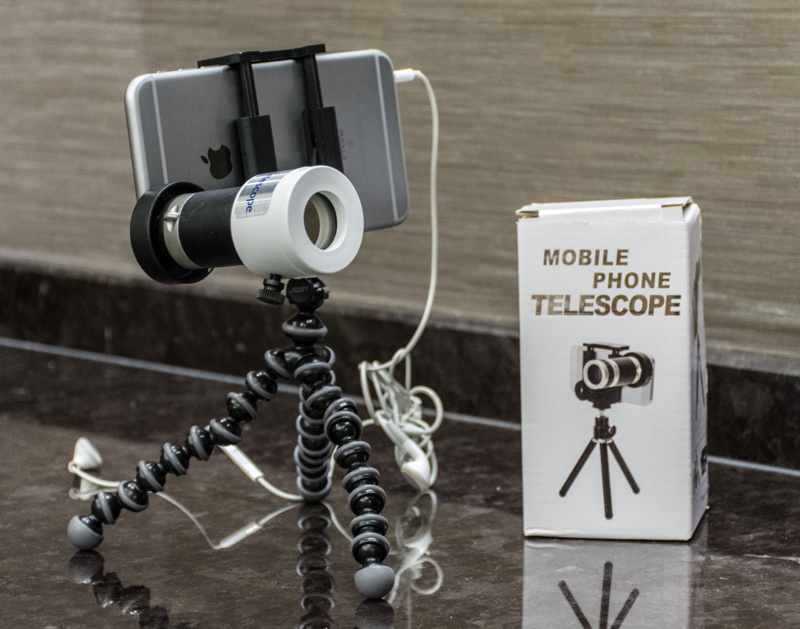
In fact Kelly had introduced me to the tour group several days before as being an "expert", and many of the group members asked me for advice.
Finally, the day of the eclipse arrived. Would all my preparations and that of so many others be in vain? Due to anticipated traffic concerns, our bus to Hopkinsville left our Nashville hotel just before sunrise, which was earlier than initially planned. Kelly provided a quick update on the weather to our bus:
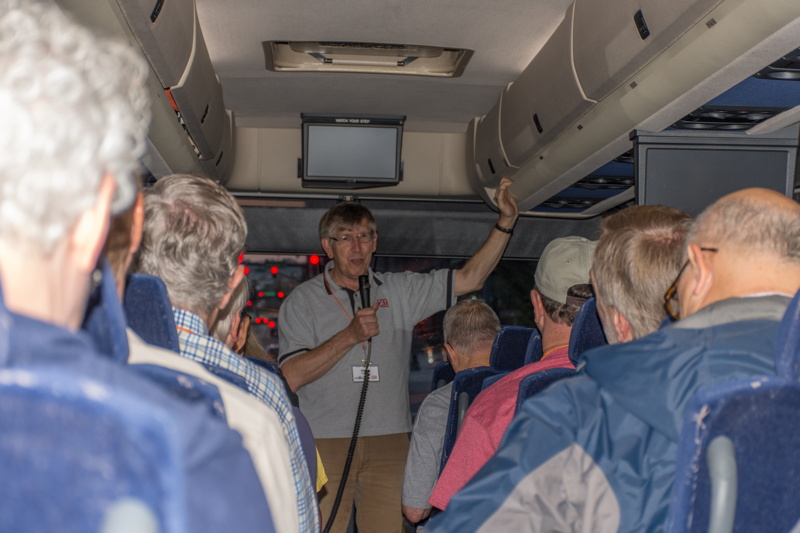
The sky conditions at sunrise as we left Nashville did not look too promising, and we had warnings about the freeway traffic:

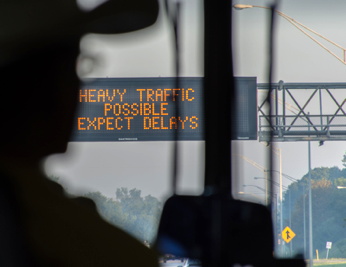
Surprisingly freeway traffic was light, and we arrived in Hopkinsville well before the start of the eclipse. The community seemed to have welcomed visitors. We saw several lots that were filled with visitors. And the traffic, which was heavier in Hopkinsville, seemed to be handled well.
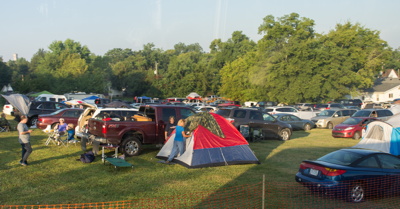

Our viewing area at Hopkinsville Community College was wide open, allowing lots of room for everyone to set up. There was a tent available to get out of the Sun, and drinks and lunch were available.
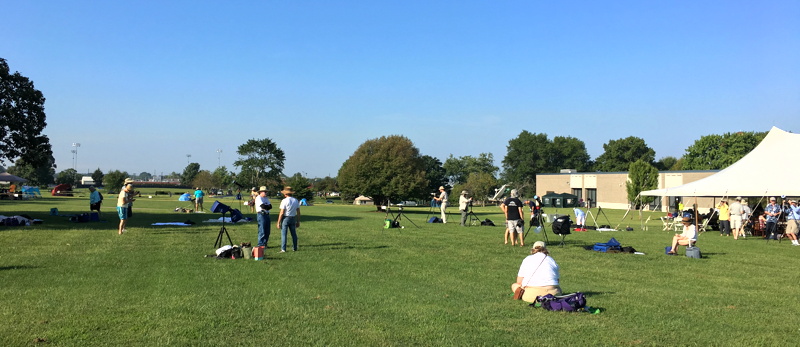
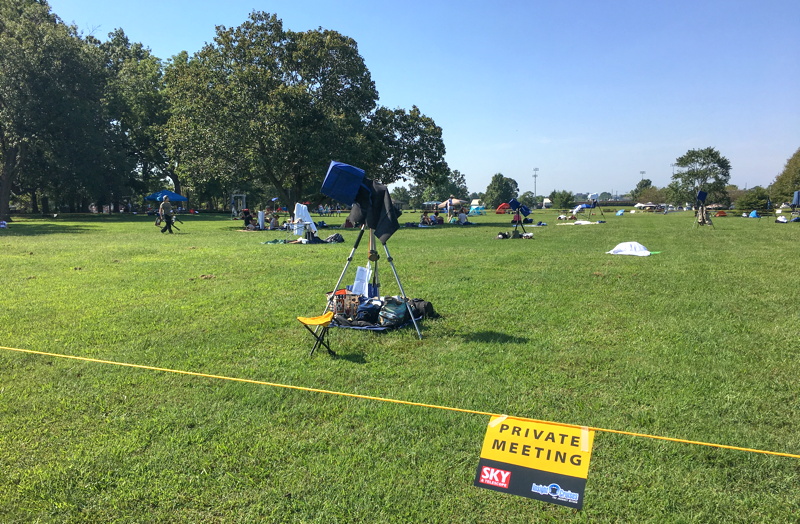
I picked out an open spot and set up my Nikon D7200 DSLR, Tamron 150-600mm lens, Kendrick Sun Finder, iOptron SkyTracker Pro, Manfrotto Geared Head, and Right Angle Viewfinder, seen in the photo above covered and uncovered in the photos below. On the ground by the tripod were bottles of water, binoculars, cases, and other items.


Before the eclipse began, Kelly Beatty took a group photo:
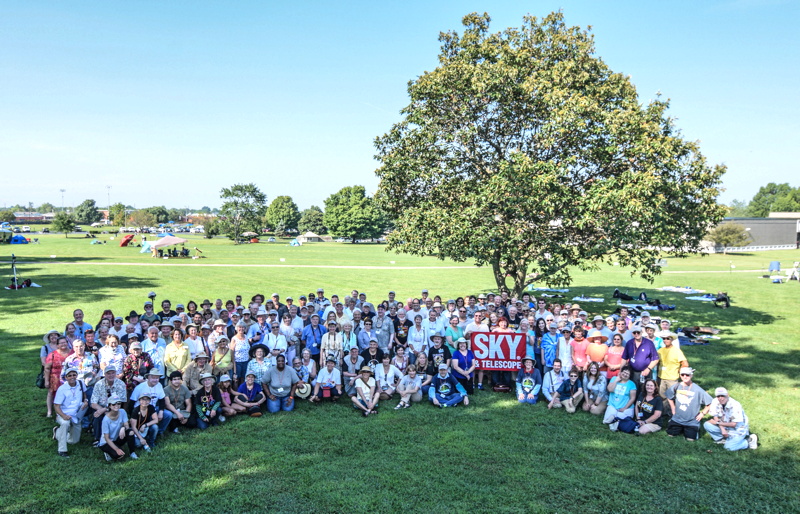
Another group prepared to launch a balloon:
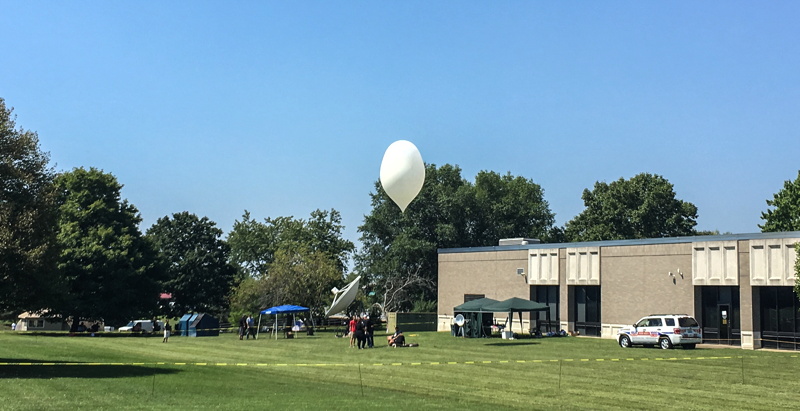
And then it was time for the Great American Eclipse!
Exposure information for the D7200 DSLR:
Partial phases: f/6/3, 1/1000sec, ISO 400mm, White Balance auto, Focal Length 600mm (900mm 35mm equivalent)
Totality: f/6/3, varied from 1/2000sec to 1/8sec, ISO 400mm, White Balance auto, Focal Length 600mm (900mm 35mm equivalent)
The uneclipsed Sun 12 seconds before first contact:
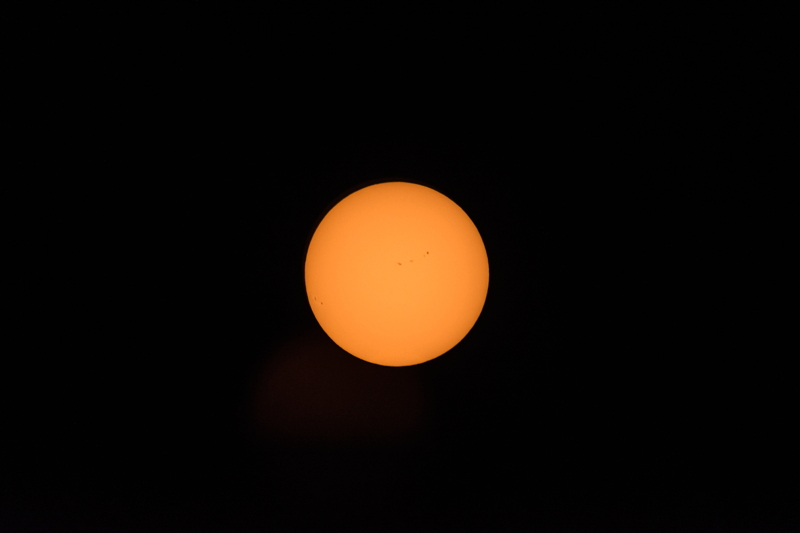
The partial phase began with first contact at 11:56:32 local time. This photo shows the Sun two minutes later with the Moon appearing at the right on the Sun's disk:
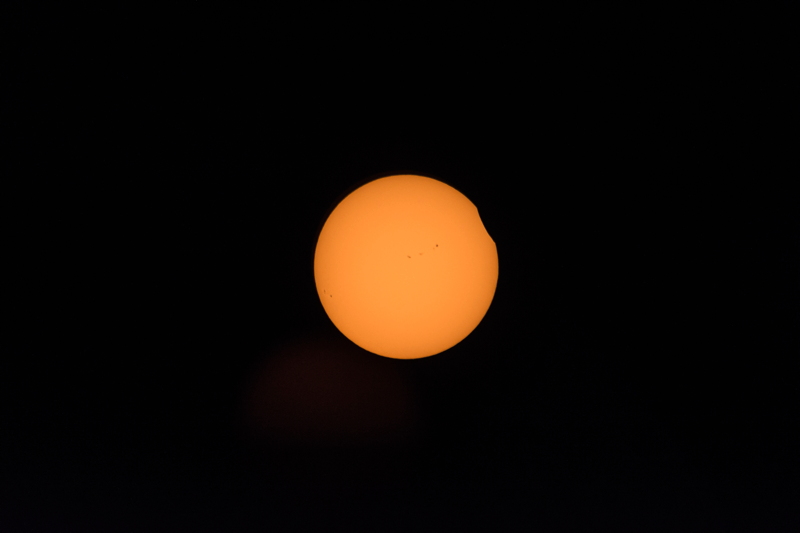
It was nice to have some small sunspots visible on the Sun.
The sky remained mostly clear during the entire eclipse except at about 12:54 local time when a cloud covered the Sun for about two minutes:
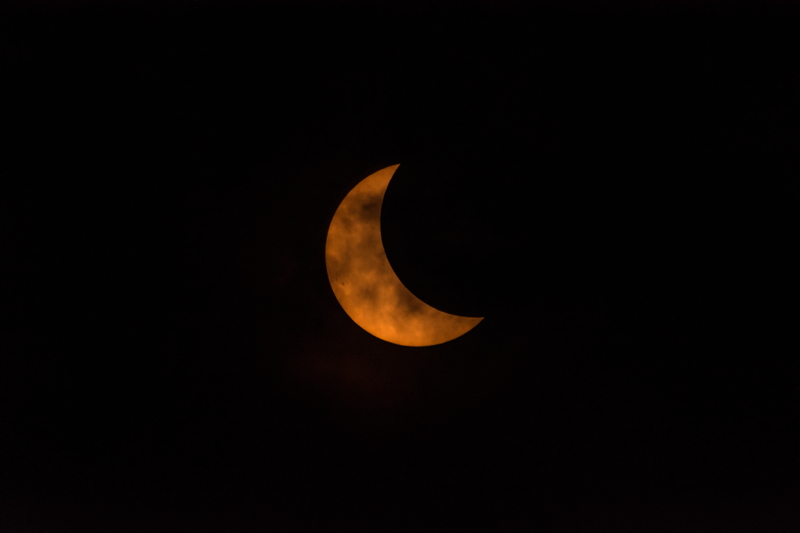
Here are three images of totality using different shutter speeds to bring out various details:
Inner corona and two prominences
f/6/3, 1/2000sec, ISO 400mm, White Balance auto, Focal Length 600mm
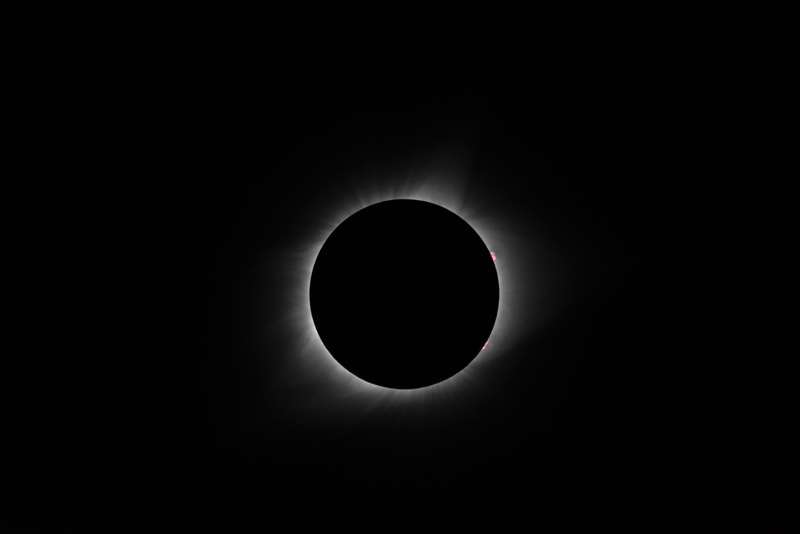
Click or tap on image for larger version
Corona
f/6/3, 1/40sec, ISO 400mm, White Balance auto, Focal Length 600mm
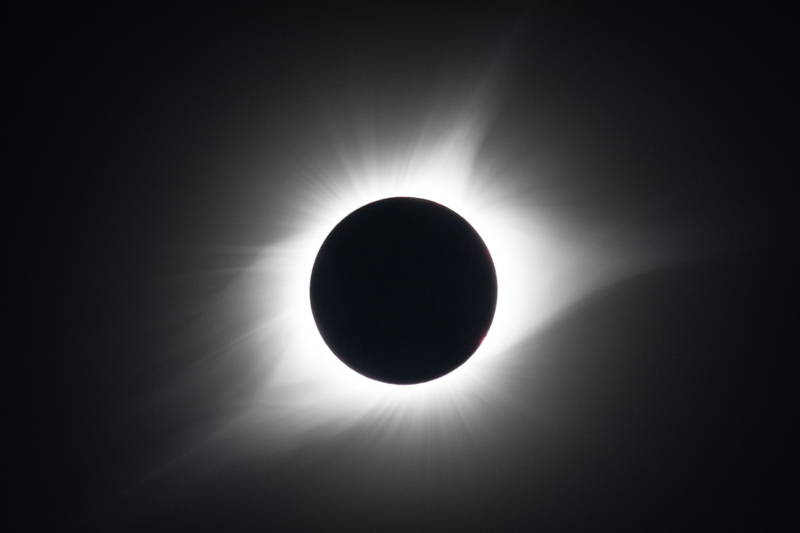
Click or tap on image for larger version
Corona and Earthshine
f/6/3, 1/8sec, ISO 400mm, White Balance auto, Focal Length 600mm

Click or tap on image for larger version
Normally you see Earthshine on the Moon during its crescent phases in the evening after sunset and in the morning before sunrise. Earthshine is not visible to the eye during Totality, but it can be photographed. This was one of my goals for the total solar eclipse.
I am no Photoshop expert, but this image of the Sun and Moon at totality is a merge of several photographs at various shutter speeds:
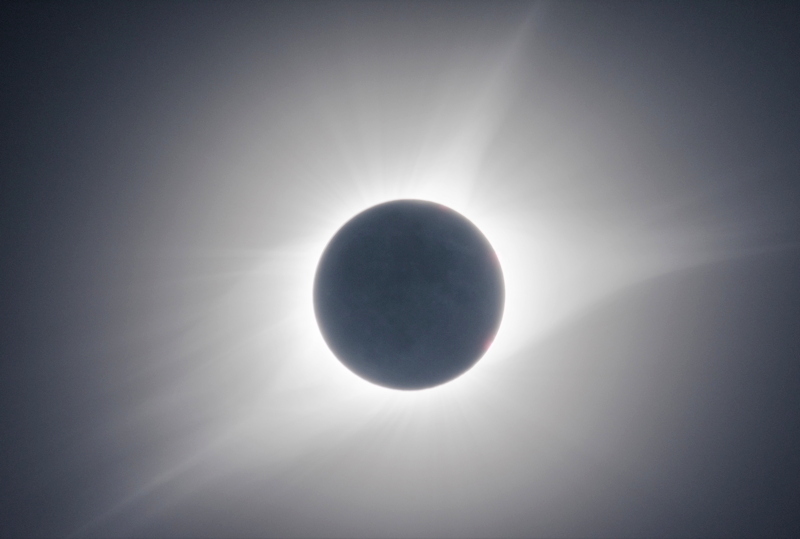
Click or tap on image for larger version
This is a montage of the entire total solar eclipse with the partial phases proceeding clockwise around totality:
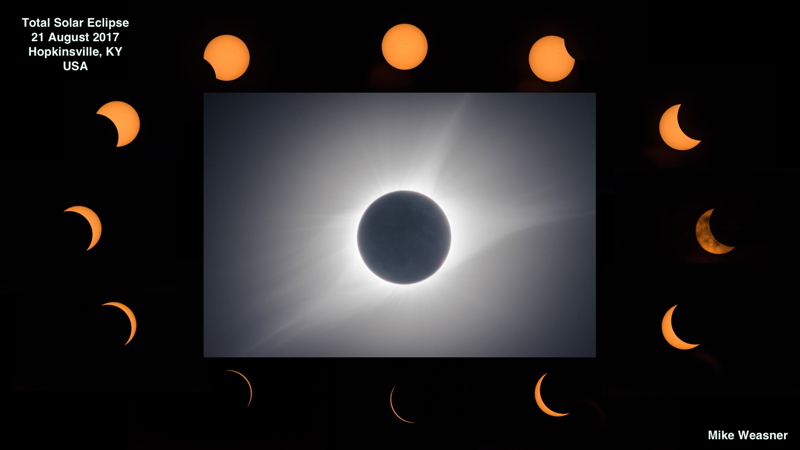
Click or tap on image for larger version
Unfortunately, I missed getting any photographs of the "diamond ring" and "Baily's Beads". I was able to view the diamond ring at the end of Totality.
I also took some handheld iPhone photos with a solar filter and 8X telephoto lens using the iOS app NightCap Camera for the partial phases and no filter/telephoto during totality:
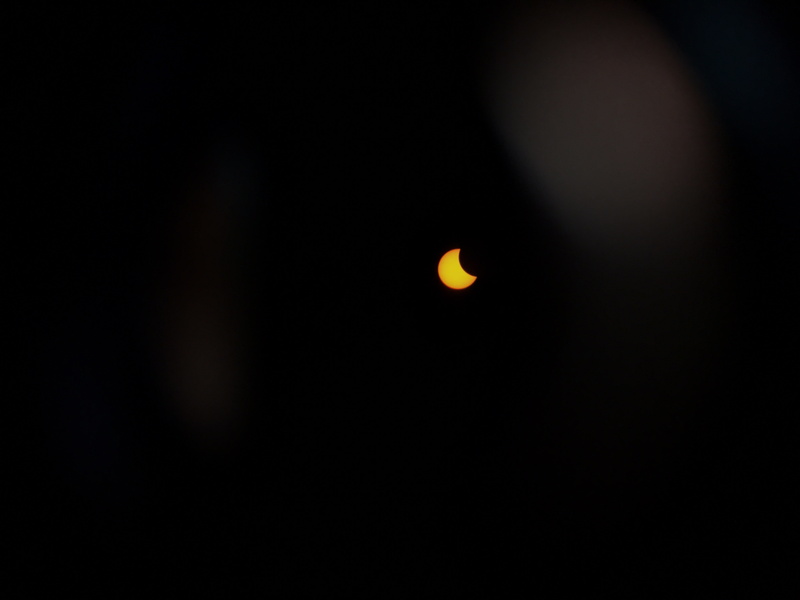
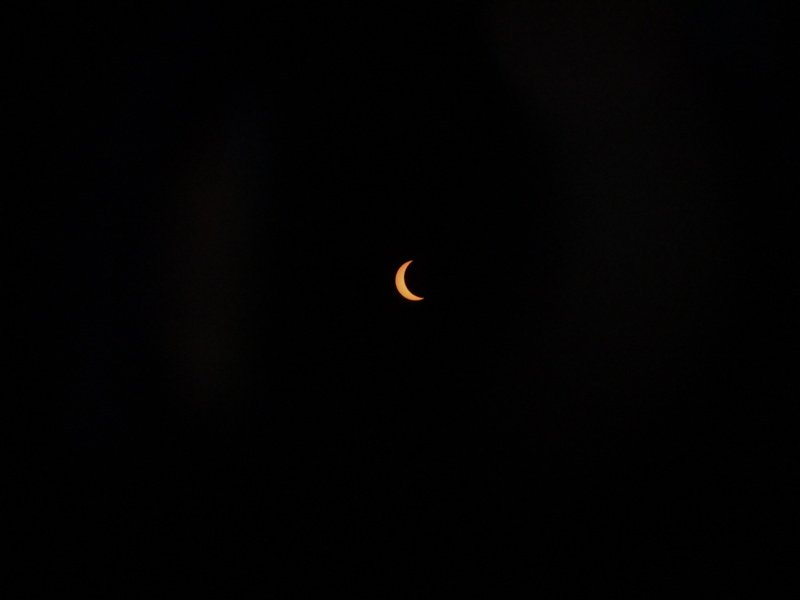
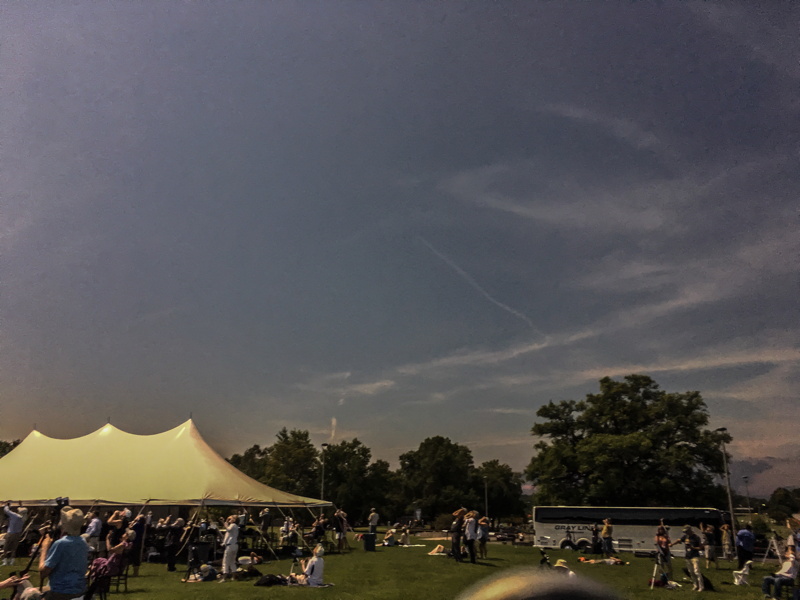

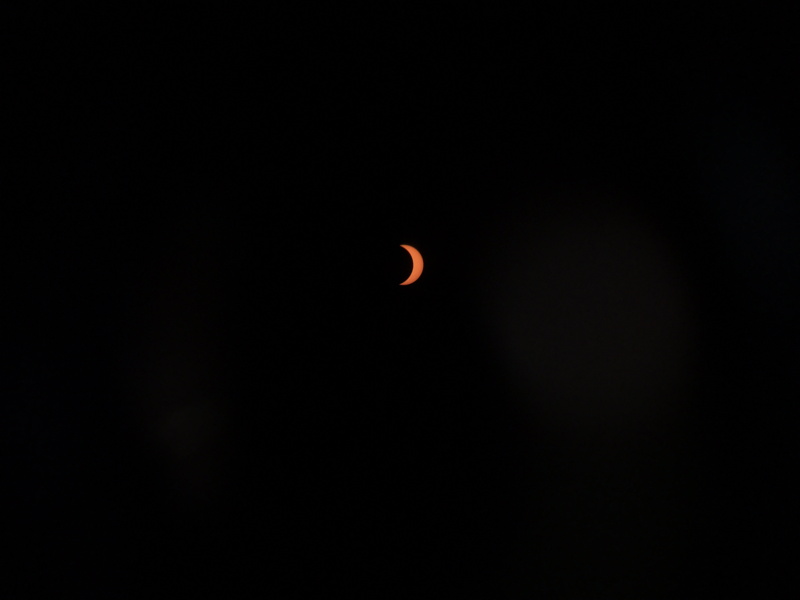
The middle iPhone photo shows the "twilight effect" at the horizon during totality, and the photo of the Sun at totality clearly shows the "black hole in the sky".
Some of the tour group left shortly after the end of totality. We and a few others stayed through fourth contact. We were on the last bus to leave Hopkinsville. Traffic was not too bad:
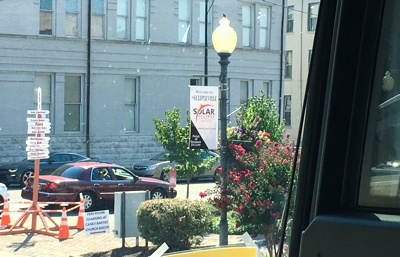
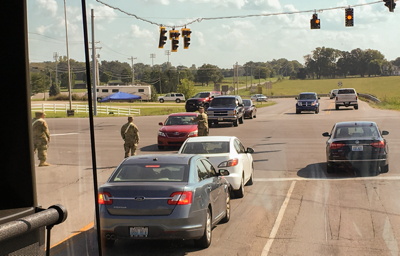
That evening there was a celebration at our Nashville hotel for a very enjoyable total solar eclipse:
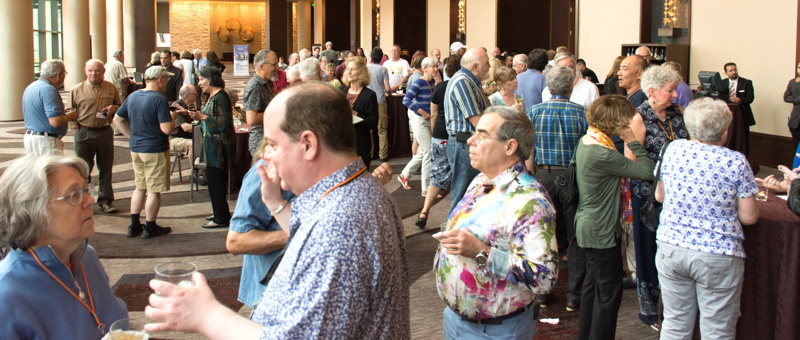
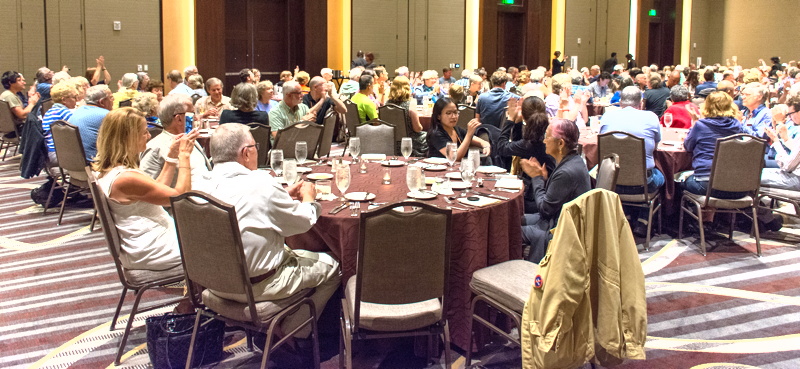
Many thanks to Kelly Beatty and the entire planning staff at Sky & Telescope, the staff of Insight Cruises, and to the various speakers who gave great presentations during the "cruise". They all made this total solar eclipse "cruise" a big success!
As I edit my tolar solar eclipse photos, I will post new ones on my Sun Astrophotography Album.
Comments are welcome using Email. Twitter users can use the button below to tweet this report to your followers. Thanks.
Cassiopeia Observatory Home Page
Copyright ©2017 Michael L. Weasner / mweasner@me.com
URL = http://www.weasner.com/co/Reports/2017/08/TSE/index.html
